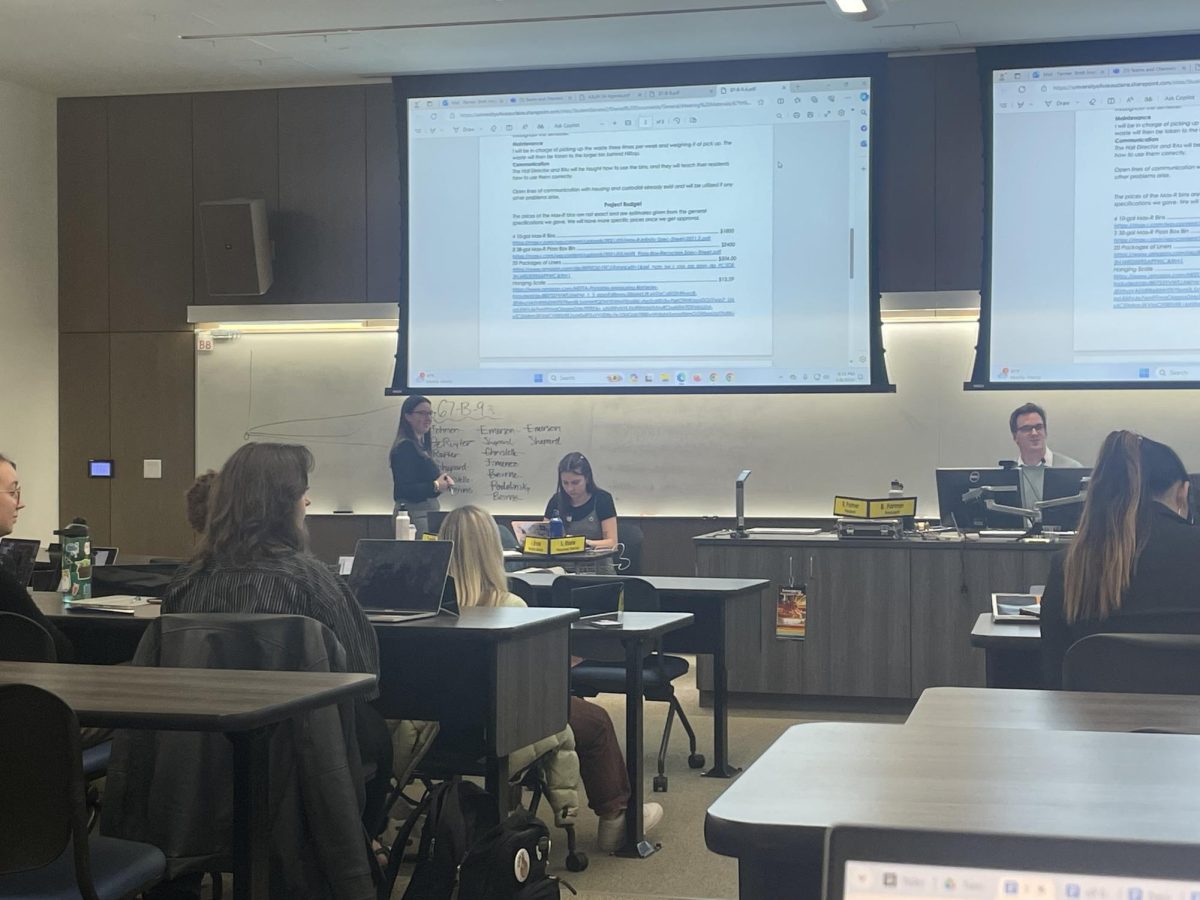This is the third story in a series about how UW-Eau Claire students pay for college.
For the first four years of senior Ryan Dutter’s college career, he didn’t receive any grants for his education, making paying more difficult.
“I have had to pay out of pocket the entire way besides whatever aid I got,” he said.
Now, the 24-year-old student has qualified for the Pell Grant, and he said the effects are noticeable.
“I actually have more money that I can work with,” he said,” so I don’t have to work as much and can concentrate on school.”
The Pell Grant is one of many grants that students can receive at UW-Eau Claire. In total, there are an estimated 4,700 students with need-based grants at this university, Financial Aid Director Kathy Sahlhoff said.
All told, students have received over $19 million dollars in federal, state and private grants last school year, Sahlhoff said. With the exception of the one private grant, all are funded by tax dollars and are gifts.
Unlike federal loans, most grants do not have unlimited funds.
“We get a pot of money to award based on the criteria they gave us,” she said. “Once it’s gone, it’s gone.”
The criteria are based on the Free Application for Federal Student Aid. Students do not need to fill out any extra material to get grants, for the most part. However, since funds are limited, Sahlhoff suggests filling out the FAFSA early to have the best chance to get money.
“Even if they have higher need, they may not get the money they are eligible for,” she said.
The exception to the limited funds is the Pell Grant. Sahlhoff said that anyone who is eligible, will get the funds.
The reason why the funds are always there for the Pell Grant is that the government predicts how many people will need it, and sets aside money for it, Sahlhoff said. Even if it goes over budget, they pull money from other areas to cover it.
The Pell is a federal grant and just over 3,000 Eau Claire students had it last year. It is the most common grant and it makes up more than $11 million dollars of the total received.
It is given to those who have Expected Family Contributions of under $5,273, Sahlhoff said. EFCs are based on everything from parent and student income to the amount of kids in a family who go to college.
For instance, junior Anna Turriff’s parents started a business five years ago and are not making a lot of money. Plus, she has three other siblings who attend college, too.
“None of us could go to school without financial aid,” she said. “That’s for sure.”
Sahlhoff said that what goes into an EFC is in part determined by age. Once a student turns 24, they are considered independent and no longer need to report their parent’s income levels.
Dutter said this is why he finally was able to receive a Pell Grant. Before he was 24, he was a little upset that he couldn’t get the financial help. He wishes the age when student’s were considered independent was lower.
“If there were different parameters or maybe a lower age group, it would help people a lot more than the current system.”
Sophomore Olivia Phanchan has also been affected by having to list parental income in the FAFSA.
Each year, she has to appeal Financial Aid’s decision that gives her almost no help so that she can get the three grants that she has.
“They didn’t understand that I wasn’t being supporting by anybody,” she said. “Even though my father can claim me on his taxes, he didn’t really support me.”
There are other federal grants as well, but they pale in comparison to the amount given out in Pell Grants. They make up just over $2 million of the $13 million given in Federal grants.
Another type of grant is funded by state funds, which comprise $5.36 million. The grant that the most students have in this category is the Wisconsin Higher Education Grant and 1,871 students had it last year.
Blugold Commitment money also has formed a grant that gave out $897,000 last year.
Finally, there is a private one, which roughly 166 students have.
Turiff receives each type of grant, but she is sympathetic towards students that are on “the brink” of getting grants, but do not.
Students are “not getting financial aid even though they need it because of their parent’s situation, their personal situation, they make think it’s unfair,” she said.
She also mentioned sympathy toward people having to pay for the grants without directly benefiting.
Phanchan believes that grants are vital and that they will benefit everybody in the end.
“What Eau Claire emphasizes here is education and returning that help back,” she said. “Not just monetarily, but in the services in returning them back to your community or where you’re from, and of course, I have the intention of doing so.”






